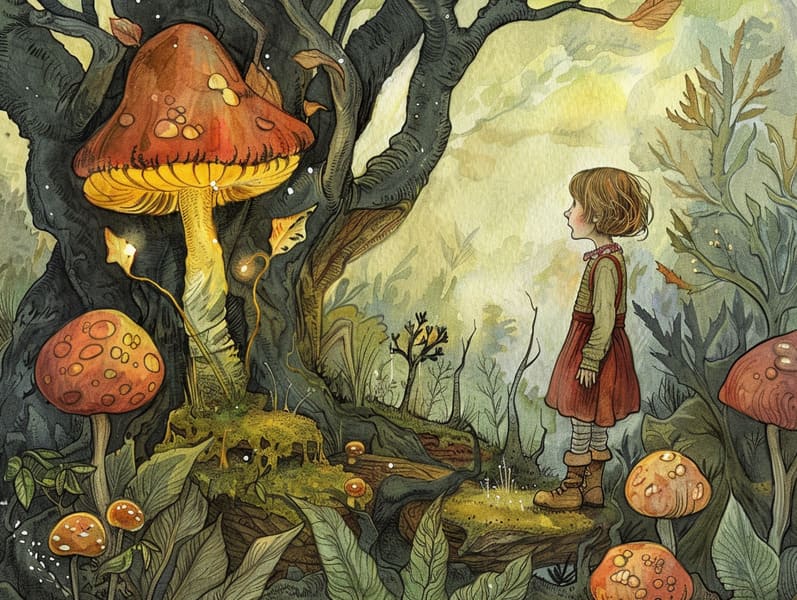The Journey of Fairy Tales and the Perpetual Appeal.
The Journey of Fairy Tales and the Perpetual Appeal.
Blog Article

Classic fairy tales have enduring presence. These narratives have been spoken from one generation to the next ages before they were ever transcribed. They emerged from a variety of cultures, including Indigenous traditions. They were initially shared among grown-ups, often carrying themes and messages reflective of the societal norms and beliefs of the time.
The famous Grimm duo, Jacob and Wilhelm Grimm, were among the first to compile and release many of these beloved tales. Their volume, "Grimm's Fairy Tales," included narratives like "Ashenputtel," "Hansel and Grethel," and "Little Snow White," which have since become cornerstones in the world of famous fairy tales. Similarly, Andersen's magical tales, such as "The Mermaid," and "The Duckling that Could," have enchanted hearts worldwide, ensuring their place in the pantheon of classic fairy tales.
Despite their ancient origins, traditional fairy tales remain as significant as ever, especially as kids' bedtime tales. These magical stories are now available in various formats, including beautifully illustrated books, magical animations, and digital fairy tales.
Their lasting presence can be traced to several captivating elements:
Ethical Lessons: Ancient fairy tales often impart important moral lessons. Stories like "The Shepherd Boy and the Wolf" teach the merit of truth, while "The Tortoise and the Hare" underline the benefits of steadfastness and humility. These narratives offer young ones clear distinctions between correct and incorrect, building their moral compass in a tender yet significant way.
Empathy and Awareness: Ancient fairy tales frequently illustrate beings facing challenges and struggles, provoking readers to identify with their struggles and rally behind their triumphs. For instance, "The Tale of Beauty and the Beast" reveals the virtue of seeing beyond the surface to recognize the inner being of a character, encouraging sympathy and awareness.
Cultural Appreciation: Many classic fairy tales are deeply embedded in the cultural contexts from which they blossomed. Engaging with these fairy tales can provide captivating looks into different heritages, fostering a sense of global awareness and comprehension.
Inventiveness and Fantasy: The supernatural elements in traditional fairy tales—wizardry and magic—foster children’s visions and dreams. These stories carry readers to fantastical realms, awakening creative ideas and a sense of curiosity that endures a lifetime.
Classic fairy tales are not only enchanting but also pedagogical. They serve as fantastical tools in building various brain and heart skills in little ones. When fairy tales are narrated, they improve speech development by offering new word meanings and intricate sentence structures. This practice also improves auditory perception and concentration, as young readers remain attentive, expectant to see what happens next.
Furthermore, debating the themes and characters of old fairy tales can promote thought processes and analytical skills. The young learn to discover patterns, foresee events, and know cause and effect. These examinations also aid little ones communicate their thoughts and feelings, enhancing their emotional intelligence.
In today’s digital era, the existence of web-based fairy tales has made these stories more accessible than ever. Web platforms and programs feature comprehensive collections of Grimm's fairy tales that can be accessed or played anytime, anywhere. Fairy tales voiced are particularly sought after, making available find it here an engaging way for kids to relish these entrancing tales. Sound books and read-to-me stories lead characters and settings to life, often supplemented by delightful music and tunes that augment the narrative journey.
The enduring charm of timeless fairy tales lies in their ability to modify to modern days while maintaining their main lessons. Contemporary versions of these tales often showcase more varied figures and modern settings, making them accessible to today’s audience. However, the core values of gallantry, compassion, and honesty remain unchanged, continuing to move kids of all ages.
Traditional fairy tales also offer a sense of familiarity and closeness. They give a methodical narrative with a transparent beginning, middle, and end, often coming to a close with the settlement of conflicts and the triumph of goodness over badness. This constancy can be consoling for little ones, giving a sense of firmness in an dynamic world.
Traditional fairy tales continue to bewitch and enlighten new generations, maintaining their enchantment and importance in modern society. As bedtime stories for kids, they bequeath a perfect blend of magic and knowledge, nurturing moral values, empathy, and creativity. The abundance of digital storybooks and the prevalence of fairy tales narrated affirm that these ancient stories remain attainable to new generations.
By safeguarding and spreading these narratives, we continue to appreciate the rich tapestry of tradition and cultural heritage. Whether you are perusing a artistically illustrated book, browsing a online collection, or playing an narrated book, the attraction of children's fairy tales is always within reach. These narratives illustrate of the unchanging nature of fairy tales and its ability to bind us across eras and regions.
Whether you are accessing a beautifully illustrated book, seeing a internet library, or hearing an spoken story, the allure of ancient fairy tales is always within reach.
These tales teach us of the unwavering impact of storytelling and its ability to link us across generations and cultures, establishing a link that enchants and educates alike.